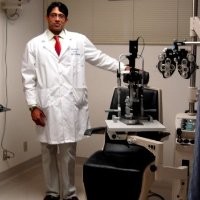Researchers from the University of Pittsburgh School of Medicine and Emory University have recently discovered that the bird flu virus, also known as H5N1, remains stable for at least an hour on commercial milking equipment’s metal and rubber parts when present in unpasteurized milk. This finding, published in Emerging Infectious Diseases, raises concerns about the virus’s ability to infect humans and other animals.
The research emphasizes the increased risk for dairy farm workers who may be exposed to bird flu, and it points to the urgent need for more extensive use of personal protection equipment such as face shields, masks, and eye protection.
Valerie Le Sage, Ph.D., lead author and research assistant professor of microbiology and molecular genetics at the Center for Vaccine Research at Pitt, explained the situation. “We must milk dairy cows, even when they’re ill. Yet, we’ve been unsure about the duration the virus can stay stable on the equipment from residual milk during the milking process. It’s alarming that the virus in unpasteurized milk can stay stable for hours, potentially infecting farm workers or spreading from one animal to another.”
Bird flu can cause a range of clinical symptoms, from mild fever and cough to severe shortness of breath and pneumonia, and can even be fatal. Since the bird flu virus was first detected in U.S. dairy cattle in March 2024, it has crossed state boundaries and infected at least three people. Although the U.S. Center for Disease Control and Prevention states that the current risk to the general public remains low, flu viruses can adapt rapidly to human-to-human transmission.
The researchers aimed to understand the virus’s potential spread from cattle to dairy farm workers. To do this, they examined how long infectious flu virus particles could remain stable in unpasteurized milk droplets on commercial milking equipment’s metal and rubber components.
In a laboratory environment replicating the humidity and temperature of outdoor milking stations in Texas, they found that H5N1 virus particles in milk remained stable on metal and rubber for over an hour. Furthermore, particles of the H1N1 virus, or swine flu, which behaves similarly to H5N1 in lab conditions, remained infectious for at least three hours on rubber and at least an hour on stainless steel.
Le Sage concluded, “Our research indicates that surfaces of milking equipment can remain contaminated for a significant duration, escalating the potential spread from an infected animal to a human. Therefore, it’s crucial to underscore the importance of face shields, masks, eye protection, and enhanced equipment sanitization between cows to mitigate risk to workers and prevent the virus from spreading among animals.”
This study received support from the Department of Health and Human Services and the National Institute of Allergy and Infectious Diseases, which also supports the operations of Pitt’s Regional Biocontainment Laboratory within the Center for Vaccine Research. Other contributors to the research include Douglas Reed, Ph.D., and Paul Duprex, Ph.D., from Pitt, and A.J. Campbell, Ph.D., and Seema Lakdawala, Ph.D., from Emory University.


Comments are closed for this post.